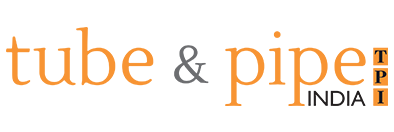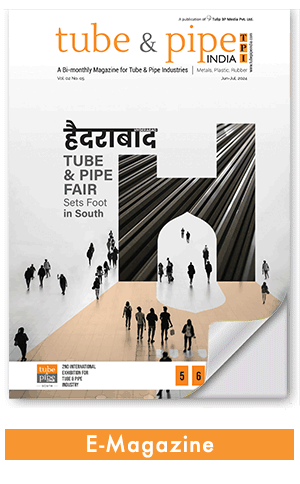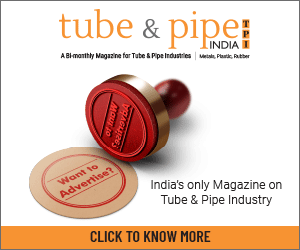“We look at what could be the actual requirements of the customer and select the machines on that basis… We have software that takes the drawings from the 3D model, splits them into individual spools, and does the planning”
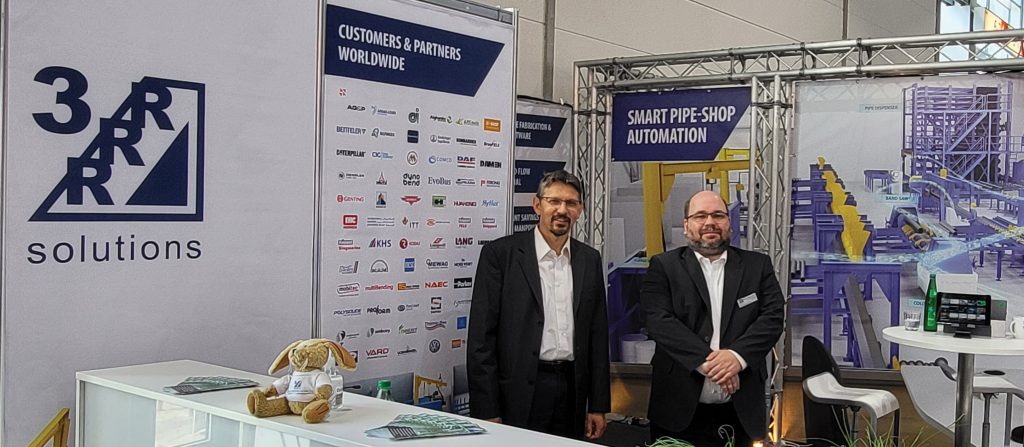
3R solutions GmbH has decades of experience in the piping industry. The company specialises in pipe-shops for pipe spool production, with a focus on automation through the aid of its software framework that is customised for each unique project. In a conversation with Tube & Pipe India, Mr. Carsten B. Tripscha, Executive Assistant – Sales & Marketing, 3R solutions GmbH, shares interesting insights about the company and its automated pipe-shop solutions.
Tube & Pipe India: Tell us about your company.
Carsten B. Tripscha: 3R solutions is a systems integrator specialising in setting up automated smart pipe spool factories. We have software integration throughout the entire process. We work as a consultant specialist company for customers in various industries including oil & gas, shipbuilding, and automotive. If the customers source each machine separately, they might have efficient machines, but would never be able to use them in their full capacities.
We look at what could be the actual requirements of the customer and select the machines on the basis of that for an integrated flow of material. So, all the machines are designed to be part of one system such as clockwork. We have software that takes the drawings from the 3D model, splits them into individual spools, and does all the planning of the workshop or activities. With our software, you will always know who worked on which spool and at what time. That’s why we call it the smart factory instead of just a regular automated factory.
TPI: Please shed some light on the software and machines at your facility.
CBT: We are a software company and consultant company. The software is developed in-house, but the equipment and machines are sourced from world-leading companies. Our advantage is that we are independent. If you have an agent or a distributor, they have a catalogue of the machines that they sell. We have the flexibility. If for a specific project, the machine from Company A is better than Company B, then we will propose the machine from Company A. However, if the delivery time is more and we need the machine urgently then, we might go with Company B.
Everything needs to be set up and integrated as part of a system including the activities in the shop itself. A lot of people look at one point where they think there is the bottleneck – it’s usually the welding and they think they need more welders because the welding is too slow and they don’t get the required output.
Usually, the welding quality is fine, but they don’t spend as much time on welding as on other things such as waiting for material, transport, etc. Reducing my welding time from 45 minutes to 40 minutes doesn’t help me if it takes me 60 minutes to get the pipe from the fitter. What we are looking at is reducing the incidental time! If the welder takes 45 minutes to weld, but we reduce the time that it takes the pipe to get to the welder to 45 minutes from 60, you get a 33 percent increase in efficiency though there is no improvement in the actual welding process. If the person has to spend five minutes checking a drawing to find out what needs to be done, that five minutes are essentially lost. That time can be reduced if he gets all the information on the screen.
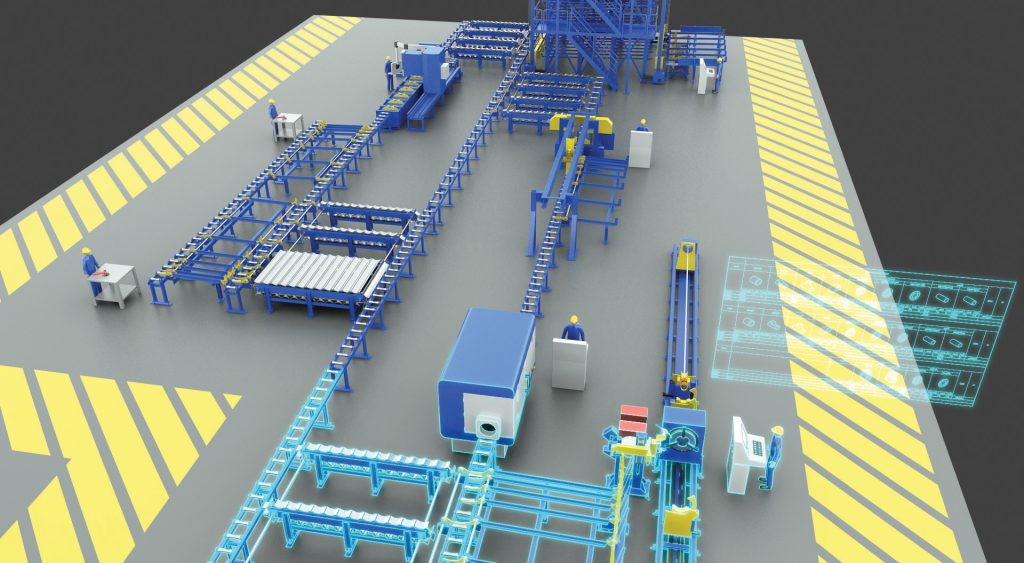
TPI: Tell us a bit about your team.
CBT: We are a company of about 25 people. The majority of our people are software developers including our CEO. He started at the company when he was 16 years old, and took over from our company founder when he was in his mid-20s. Our company founder is going to turn 89 this year, and is still very much involved in our work.
Initially, he was a welding engineer and instructor and did a lot of R&D in the field of welding. He set up pipe shops all over the world. In the late seventies or early eighties, people started using computers to do design work. The first CNC and NC control machines came up. However, he realised that there was a gap in the data flow. People were using software to create 3D models or fabrication, but they didn’t have the data for the machines. Hence, in 1982, he founded a software company to create one of the first software applications to take construction data and turn it into fabrication data. That has basically been developed and expanded over the years, with new functionalities and applications.
We have a small marketing team and a good visual graphics artist who can visualise what we do for the customer. All the videos and advertisement materials are produced in-house. The majority of our people are software engineers with an experience of 5-15 years and we train them in-house as well.
Our three-year training program is the standard program for developers in Germany to be certified programmers. Even during that program, our trainees are involved in the projects and working with the customers as only theoretical knowledge doesn’t help. People who are in their third year of training also went to Japan and Brazil for projects. The majority of the people who finish their apprenticeship stay with us. The ones, who do not, can find work anywhere because they’re well prepared.
TPI: What percentage can a company save on the cost of the operation with a good automation system in place?
CBT: We had customers who reduced the manpower on the shop floor by 50 to 70 percent, but with the software and the planning, they reduced the people in work preparation by 90 percent. They had 20 people in the office doing the production planning, tracking, and pricing reporting. They reduced it 2. Talking about production efficiency, they saved about 50 percent of the time. They went from 1.5 to 1 or even less than that.
TPI: What are some of the recent trends? Also, tell us your strengths with regard to software and information that you have.
CBT: One of the biggest trends that we see is people keep talking about Industry 4.0. I personally do not like the term industry 4.0, because it’s not really clearly defined. Also, we don’t automate for the sake of automation. Automation is done to save money, and not spend money. Hence, it should bring you tangible returns of around 3 to 5 dollars for every dollar you invest in it.
The concept of Industry 4.0 works fine if you have mass production of the same thing, such as the automotive industry which builds the same spools 500,000 times. However, the offshore industry builds 500,000 spools once. Hence, the process needs to be different for them.
We prefer to keep our data or the customer’s data within the customer’s IT network. If the customer has a cloud network, he’s also responsible for keeping it. Ideally, the customer has his own server and his own IT network. About a year ago, there was an accident at one of the big data centres in Strasbourg, France. Several hundred servers went up in flames, millions of websites were down, and so much data was lost. Therefore, if you keep the data locally at your own place, there’s still some risk, though steps can be taken to mitigate it. If you store it in the cloud server, you don’t know how good the physical security is and how safe is your data. We, personally, do not offer it as a standard to a customer. We’ve been doing all those principles of tracking the data, giving the data to the machine, extracting all of those, and smart manufacturing, but we also prefer to have the operator on site to override because any robotic machine is only as smart as the programming.
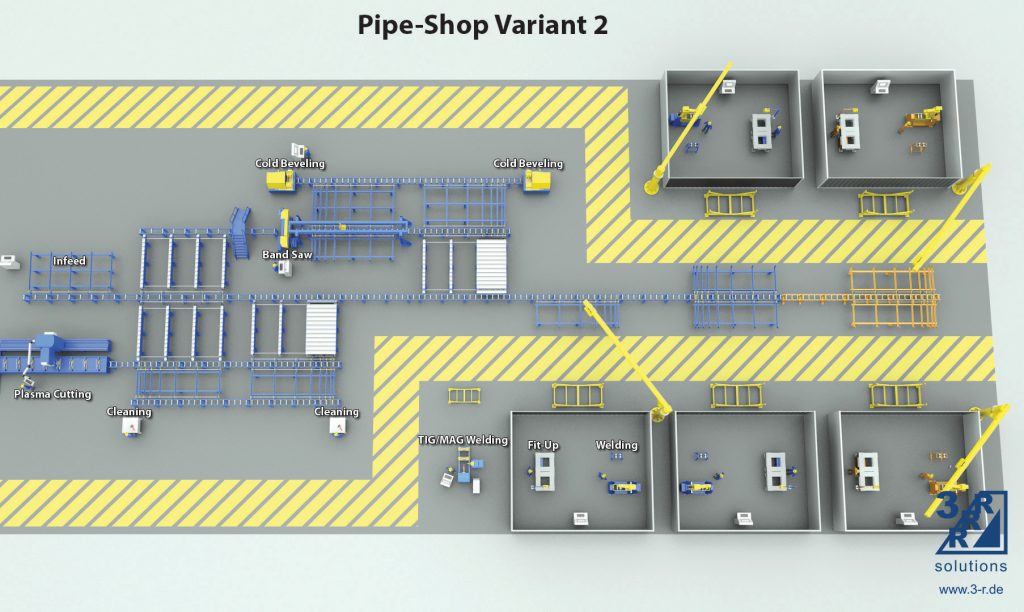
If you have corrupted data, and you don’t have the human to check, you might not be able to find the error until it is way too late. The human operator is a potential source of mistakes and errors; on the other hand, it’s also a control mechanism to catch errors that might have been made.
TPI: Tell us about your Indian connection.
CBT: We have some potential customers in India. It is a significant potential market for us with a lot of demand. There are a lot of industries in India and we are considering attending some Indian trade shows. We don’t have any direct customers right now. However, we work with a lot of the machine manufacturers who have clients in India who use our software or some of our applications if not the full software package.
Also Read: Nirmal Overseas: Keeping Up with the Latest Technology is the Success Mantra
The bending simulation software is one such software. Comco from Japan is our consumer and it has a subsidiary in India. They sell our software together with their machines. There are a number of such vendors who have business in India and find it easier to offer our software together than develop their own. I have no direct contact with such customers but would love to have a big project somewhere in India.
TPI: Anything else you would like to add to the interview?
CBT: If you do want to automate fabrication or improve it in general, keep in mind that a pipe shop is a complex system, a change to one part of the flow of material will affect everything else. Thus, whenever you make a change, you need to look at all the connected processes in sequence. Don’t just look at each machine as an individual piece!
